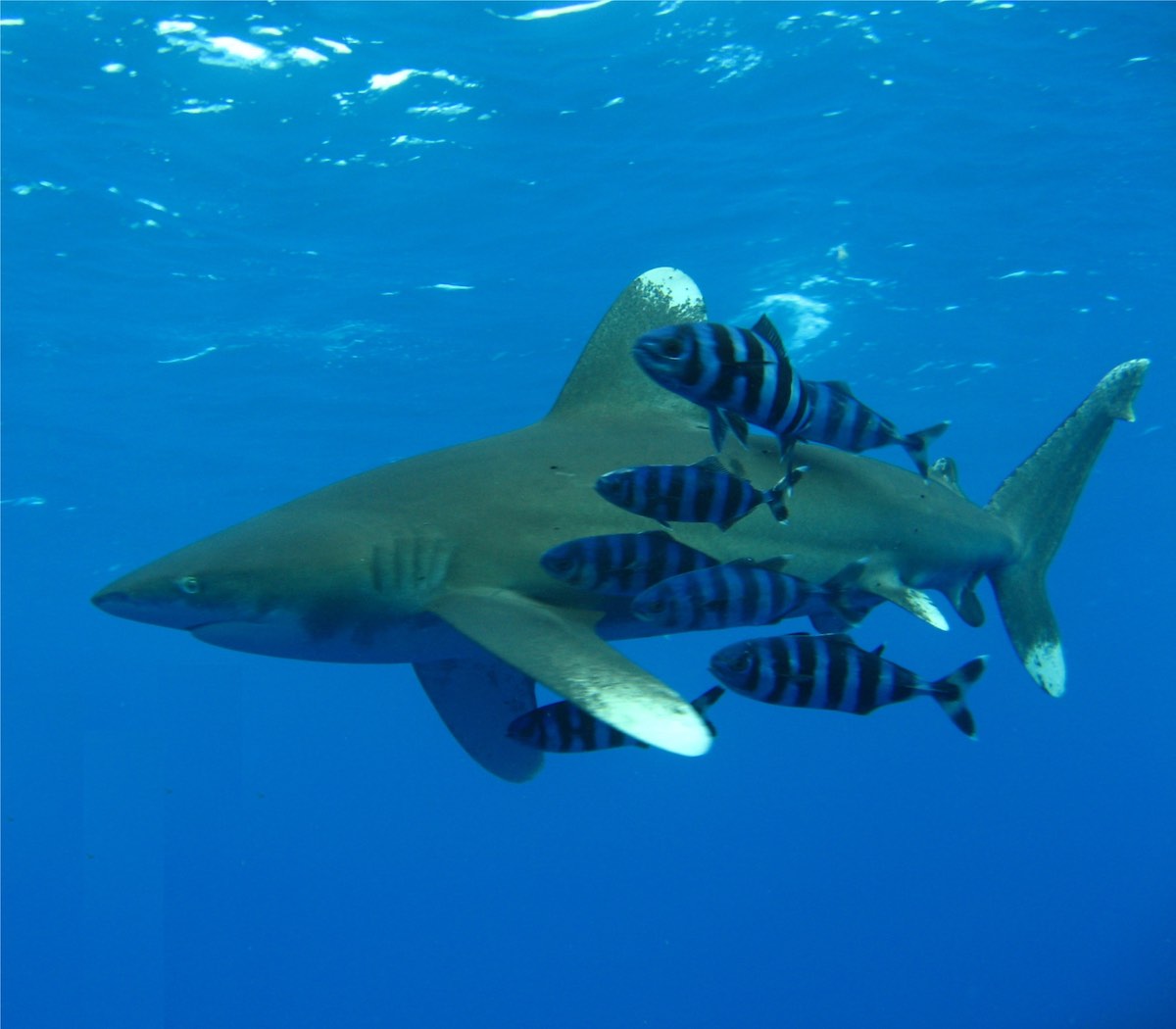
Wildlife Fact Sheet
Oceanic Whitetip Shark
Carcharhinus longimanus
About
Oceanic whitetip sharks are top predators that love the wide-open ocean. They are recognized by their white-tipped fins. They should not be confused with whitetip reef sharks which are found in reef habitats whereas oceanic whitetip sharks prefer the open sea. Because their meals can be few and far between, oceanic whitetip sharks are opportunistic feeders, meaning they will eat pretty much anything that comes across their paths, including large fish like tuna and marlin, cephalopods, other sharks and even sea birds. Oceanic whitetip sharks have even been known to eat trash thinking it’s food—which is definitely not good for them. Because oceanic whitetip sharks are opportunistic feeders, they have attacked humans on occasion, especially when a shipwreck lands people in the open ocean where these sharks like to roam. During both World Wars, the oceanic whitetip shark was a major concern for torpedoed boats and downed planes. But, in fact, the odds of humans ever encountering the oceanic whitetip sharks are very small.
Oceanic whitetips used to be among the three most abundant shark species, but now their populations are dwindling. Decreasing numbers spell trouble for the entire ocean ecosystem—removing a top predator like them can have serious ripple effects on their prey and other ocean creatures in the food web.

Did You Know?
Oceanic whitetip sharks need to be on the move—literally. Unlike some other sharks, they can’t pump water over their gills, so they need to keep swimming so oxygen-filled seawater can wash over them. If they stop swimming, oceanic whitetip sharks can’t breathe.
Get Ocean Updates in Your Inbox
Sign up with your email and never miss an update.
Status and Conservation
Oceanic whitetip sharks are found all over the world—they used to be one of the most abundant shark species in the ocean. Unfortunately, their populations have decreased by about 70-80%, leading them to be listed as “Threatened” under the U.S. Endangered Species Act. This is primarily because they have been caught in large numbers as bycatch or harvested for the shark fin, skin and oil trade.
Oceanic whitetip sharks have a long road ahead of them before their population recovers from historical fishing pressure. Like many other sharks and large animals, it takes years for them to reach the stage where they can reproduce, and even then, they have only one to 15 pups at a time. That means it will take many generations of protection and good management for them to rebuild their populations. Female oceanic whitetips are typically larger than males; oceanic whitetips can grow to more than 11 feet.